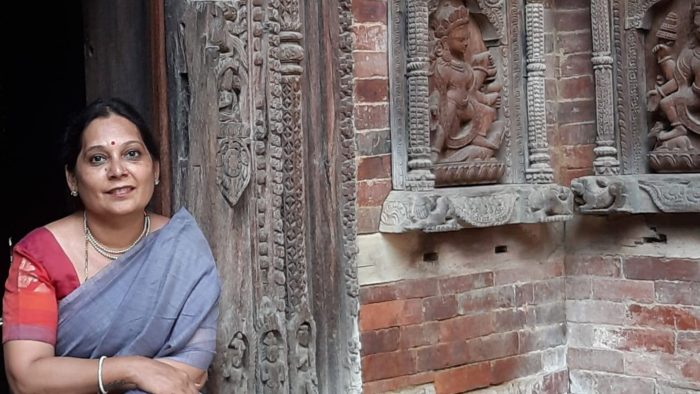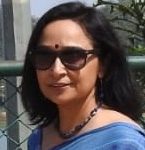- - Sri Lanka celebrates Sinhalese New Year Aluth Avurudda to coincide with Tamil New Year in India
- - Many Sri Lankan songs have tunes from Hindu movie songs
- - Sri Lankan cuisine includes rice and curry, dosa and Indian traditional sweets
Dr Soumya Manjunath Chavan - Culture Specialist of Programmes SAARC Cultural Centre, Sri Lanka has explored the visual aspects of Adi Shankaracharya’s philosophy and traced his influence on contemporary Indian painters. Her artistic sensibilities and her belief in Shankaracharya’s philosophy that all entities are one saw her tracing that oneness in the mural traditions of Sri Lanka with her work on ‘Ajanta and Dambulla – A continuity of Buddhist Tradition of Painting’ funded by the India-Sri Lanka Foundation since the year 2016.
Being an artist and a researcher with a master’s degree in Painting and a PhD from the College of Fine Arts, Karnataka Chitrakala Parishath, Bangalore University, India, she brings an artiste’s sensibilities to her role at SAARC.
The South Asian Association for Regional Cooperation (SAARC) has been a forum for great exchange of culture in a region which while sharing a lot of history and tradition has for long been struggling for unity.
The Fifteenth SAARC Summit held in Colombo in 2008 was the instrumental event that led to the establishment of the SAARC Cultural Centre (SCC) in Sri Lanka in 2012. The main objective of the SCC is to promote regional unity through cultural integration and intercultural dialogue and to contribute towards preservation, conservation and protection of South Asia’s cultural heritage within the framework of the SAARC Agenda for Culture.
The vision is to bring together the people of South Asia to celebrate and exchange the cultural heritage of the region and to strengthen relationships through sharing of the regional dance, music, theatre, literature, cinema and arts.
CSP caught up with Dr Soumya over a cup of coffee and she shared stories about her posting in Colombo, her love for Sinhala movies and food and the joys of being a culture expert.
How far has India been successful in conducting cultural diplomacy in SAARC?
The recent address by India’s Prime Minister Narendra Modi with the heads of the SAARC countries to avoid the spreading of corona virus was the most effective move in curbing the spread of the virus and ensuring regional cooperation.
Earlier the PM’s visit to Maldives was his 1st foreign tour which was followed by his visit to Sri Lanka. It brought a positive feeling of cooperation amongst them. India contributes the highest amount towards the SAARC Regional Center to carry out the Cultural activities through which the unity and peace are propagated and encouraged.
India does not behave like the Orwellian Big Brother. India is the big brother of the Ikshavaku dynasty who reached out to his kin in times of pandemic and pledged out his army of doctors and assistants when asked.
What is the role of cultural diplomacy in SAARC?
Heritage encompasses culture in its many facets of tradition, languages, architecture and arts including literature, films, dance, music, painting, sculpture etc. with a historical significance from the past and relevant in the present through the future. Cultural diplomacy opens a dialogue between nations through its arts to form the soft power while deliberating exchange and interaction amongst their peoples to harness love, peace and understanding. Such exchange of ideas and creativity has been common in the periods of the historical past amongst people beyond borders. Along with focus on the Tangible Cultural Heritage, the Intangible Cultural Heritage also has gained great significance especially after UNESCO convened to safeguard them in 2003. A conversation, an interactive dialogue and collaboration of the many aspects of cultural heritage of a region like ours will brings a better understanding and appreciation leading to peace in the region.
What role do you play as a Cultural Expert in promoting peace through arts?
This is the era of Cultural Diplomacy. The exchange amidst countries for education, tourism, culture and business has reached an all time high. Many are travelling around the globe for variety of reasons and the world is becoming a melting pot of cultures. As the Culture Specialist at the SAARC Cultural Centre I prepare the concept notes for our programs which are festivals of visual and performing arts. I study the tangible and intangible cultures of the Eight Member States and write the concept notes that are effective with the goals of the SAARC mandate. I also coordinate amidst the SAARC Nations regarding the procedures of conducting these programs successfully.
Did your posting in Colombo came as a surprise?
I had visited Colombo in 2012 for the first to present a paper at the University of Kelaniya followed by another visit to same university in 2016 when I came to know about the opening at the SAARC Cultural Centre, Colombo. On applying for this job, I got an invitation to attend the interview at Colombo from the MEA and SAARC Division of India. Being successful in the interview I was given the position which I started from the 1st of December 2017 as a contract for three years. I have great respect for the country Sri Lanka which is like my second home and great gratitude towards our Indian Government, the Ministry of External Affairs SAARC Divisions in India, Sri Lanka and the SAARC Secretariat at Katmandu, Nepal for selecting me for this esteem international position.
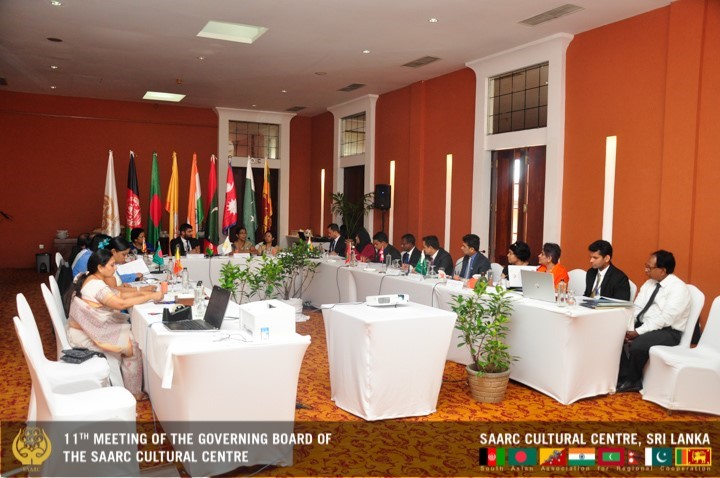
How has Colombo treated you?
Colombo has been an extremely welcoming and friendly country. Sinhalese is a very sweet language with its roots in Pali and the written letters at the first glance look close to Kannada script. Though a small country it has the highlands, the lowlands, many well preserved heritage sites, serene beaches, Buddhist and Hindu temples and gushing rivers flowing across the country. The rich wildlife and a wealth of sea animals with dense forests makes the country a great tourist destination. The food has its own uniqueness with specific spices, locally grown fruits and vegetables. Best known for dolphin and whale watching, the beaches offer a variety of water sports amidst mesmerizing sunrises and sunsets.
My office has treated me like a family, never felt away from home. The people of Sri Lanka be it in the Ministry or other officials have been very helpful. One biggest takeaway is the huge connection of people from Ministries, Academics, Universities, and Cultural Centers in all the SAARC Member States that I could make in the past two and a half years has been very fruitful.
What are the common cultural markers that India and Sri Lanka share in terms of Art, Music, Religion, food, festivals, movies?
Buddhism is the dominant religion, there are many Buddhist temples, ancient and new in Sri Lanka. The Sinhalese have a Buddhist school where the children go on the Sundays wearing the traditional white dress. The Tamils visit many Hindu temples for Ganesha, Murugan who is worshipped as Kataragrama, Shiva and Vishnu. There are temples for Goddess Mariamma and Pattini. The Muslims have mosques and I have come across a Bahai temple as well.
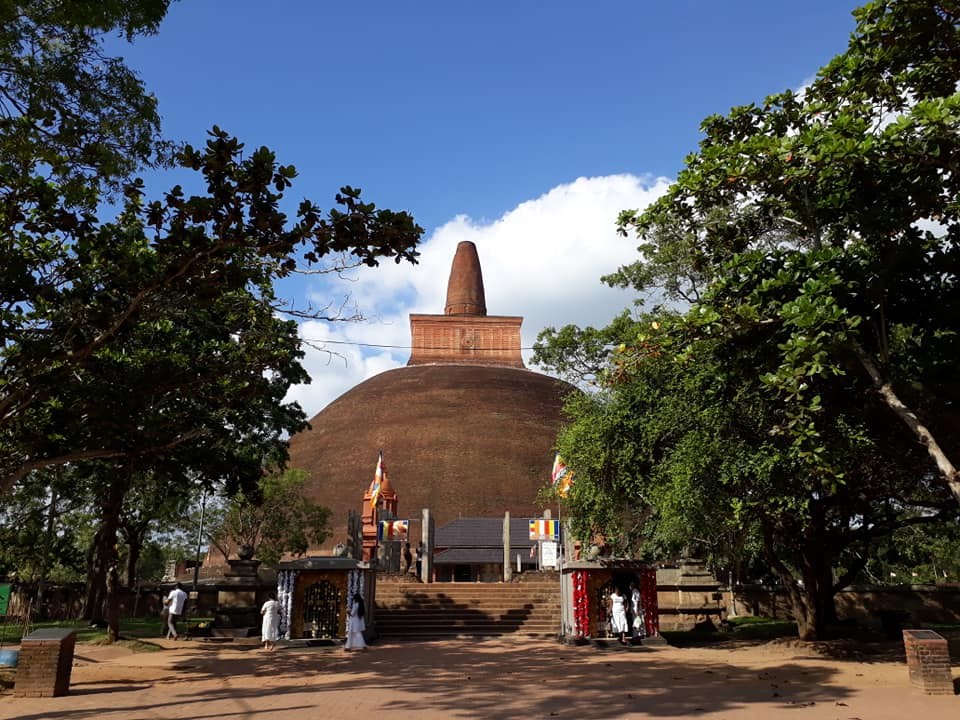
Festivals are celebrated with great fervour in Sri Lanka. The Sinhalese New Year, generally known as Aluth Avurudda coincides with the Tamil New Year and it is celebrated with games, family gatherings, sharing meals, visiting friends and relatives and offering prayers. Every full moon day is sacred for Buddhists. It is known as the Poya day. Buddhists visit the temple and the Vesak Poya day believed to be the most sacred as it’s Buddha’s birthday.
The Sinhala movies are plots around the social issues. I have met Sumitra Peries, one of the greatest filmmakers of Srilanka. Who is known by all as the "Poetess of Sinhala Cinema.” Of her films the more popular ones are Gehenu Lamai, Ganga Addara and Yahaluvo. Vaishnavee (The Goddess), is a 2018 Sri Lankan Sinhala drama thriller film directed by her which I watched because it bore my daughter’s name! The movie was wonderfully shot with a great message of saving trees.
Many Sinhala songs have tunes in common with Hindi songs, like the song ‘Ramayya Vastavayya’ of Shree 420. Taste in food is very similar. Rice and curry is the staple food just like it is for most of the South Indians. Dosas, and string hoppers are common. Some of the sweet dishes made during festivals are common ones like the kajjaya, coconut and milk sweets.
What has been your experience with other SAARC countries?
I have been interacting with the line ministries of all the SAARC countries and it has added to my understanding of the region in a broader and deeper manner. The meetings and interactions have opened new vistas of queries for my future research. My visit to Nepal for the SAARC Handicrafts Exhibition and Workshop in the year 2019 was a very special one. I have an opportunity to interact with the artisans from the SAARC region and visit the craft clusters and museums in Kathmandu.
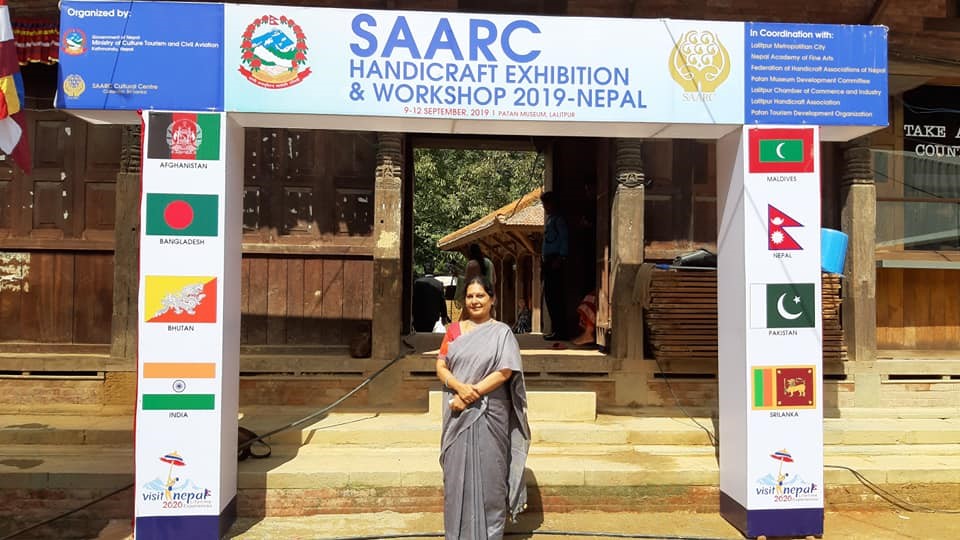
An official visit to Maldives in the year 2019 for the SAARC Artist Camp and Exhibition was an experience by itself. I had an opportunity to coordinate and be a part of the organizing team for the artists camp held on the picturesque beach of Hulhumale, in the Maldives. Hulhumalé is a reclaimed island located in the south of North Malé Atoll, Maldives. It is a beautiful artificial island was reclaimed to establish a new land mass required to meet the existing and future housing, industrial and commercial development demands of the Malé region. With water enveloped in every direction the sunsets and sunrise are marvelous. An interaction with the Minister of Culture and other dignitaries was very helpful in building relations with the officials and diplomats.
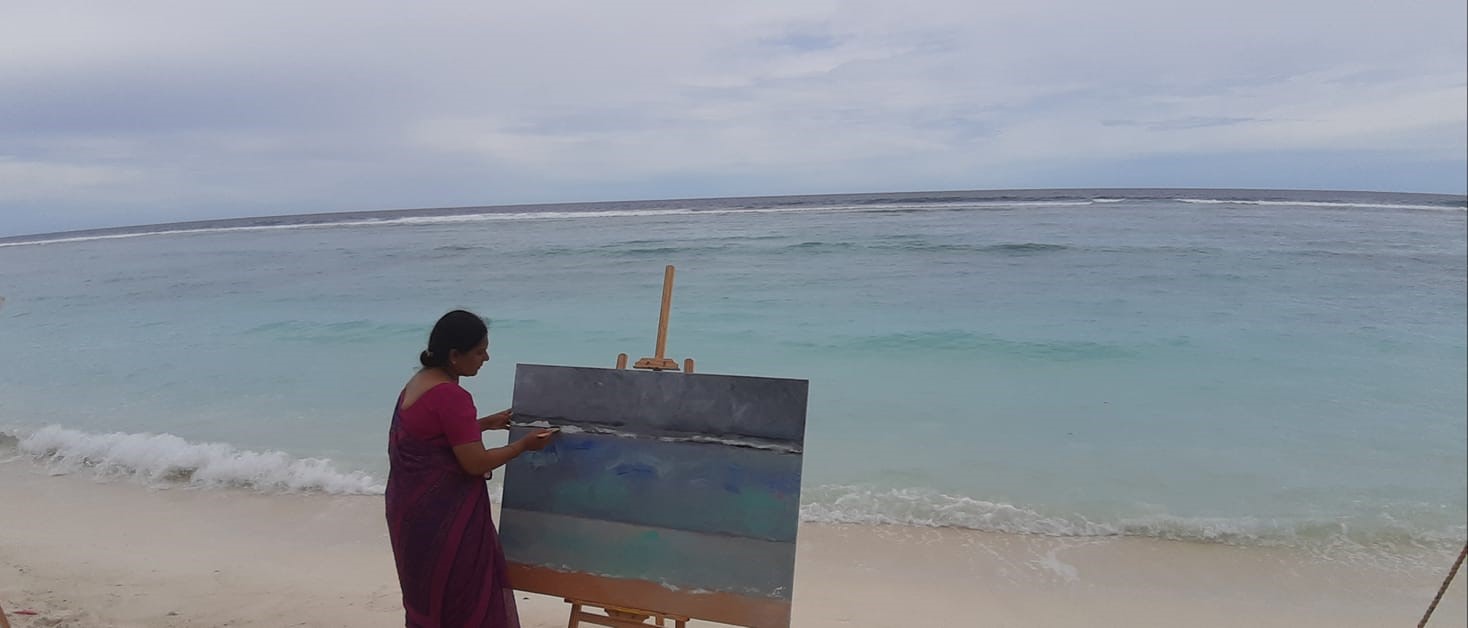
Please share your thoughts on how SCC has brought countries, institutions and people closer.
SCC has done commendable work in integrating Afghanistan with the rest of the region. Bamiyan was chosen as The First SAARC Cultural Capital. Bamiyan was officially inaugurated as the SAARC Cultural Capital on the 5th of June 2015, and it became the host to many cultural programs including the SAARC Artist Camp in 2015.It put focus on the rich legacy of the region that has fast been losing its cultural heritage. Subsequently SAARC Archaeology and Heritage Management Training Workshop Footsteps of the Past, Custodians of the Present, Heritage of the Future - Afghanistan has been scheduled for the year 2020 to document and devise a strategy for safeguarding the Tangible as well as the Intangible Cultural Heritage sites of Afghanistan. There are sites in the region which are yet to be identified, conserved, restored and managed for posterity. Schemes will be explored for Sustainable Tourism Promotion at the Cultural Heritage Sites. This will safeguard the cultural legacy of Afghanistan in no uncertain terms and portray the region in a much different light.
Afghani filmmaker Roya Sadat’s “A Letter to The President” winning the Best Screenplay award at SAARC Film Festival in Colombo in 2019 brought cheer to the strife torn country and gave them hope of a different kind of a world.
What forms of cultural diplomacy appeals to people at large?
A unique and important element of cultural diplomacy is its ability to reach youth, non-elites and other audiences outside of the traditional embassy circuit. People have always enjoyed movie festivals, art camps and exhibitions. Festivals based on folk songs and dance are a huge hit. Food festivals are a big draw and the stalls run out of food in no time!
These events always create a positive feeling and nurtures the sentiment of oneness.
Having worked in the field, what is your take on cultural diplomacy and how can Culture ensure lasting peace in the region.
Culture fosters mutual understanding. Over the years, SAARC Cultural Centers of member states have made commendable strides in placing the mechanism for greater cooperation and regional integration. The SAARC Cultural Centre in Colombo with the support of the member states and the SAARC Secretariat acts as a platform for intercultural understanding and respect for cultural diversity in the South Asian region.
Ultimately, the goal of cultural diplomacy is to influence and to use that influence to win support for policies. SCC seeks to harness the elements of culture to induce greater cooperation in a region that has seen lowest indices in many spheres.
Personally, I feel SCC has done commendable work in bringing about greater understanding in the region by fostering dialogue between opinion makers on one hand and by allowing the citizens to explore each other’s culture with great freedom and acceptance. On top of it is seriously working on economic regeneration of the region by empowering the traditional crafts of the region. This sector is increasingly important for the benefit of the people of the Region, from the perspective of heritage preservation and economic terms, and the SAARC Cultural Centre is committed to assisting the Region to realise its full potential.
SAARC Handicraft Exhibition and Workshop has been a popular programme within the SAARC Cultural Centre calendar and has been conducted and received in several SAARC Member States with great enthusiasm. It honors the creative and clever craftsmen and women by giving them an opportunity to exhibit their products, gives them a chance to meet other artisans from the Region and to discuss new trends and techniques within the industry.
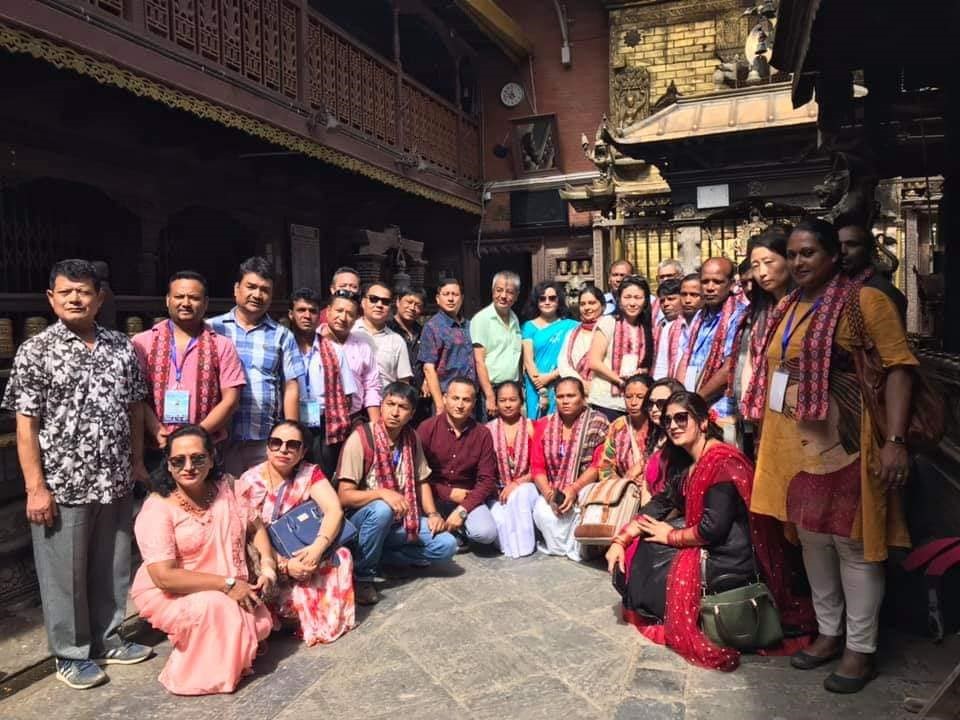
Apart from the exhibition and the display of crafts, there is exchange of knowledge and technical expertise amongst its artisans so that they can create products which are appropriate and attractive to the demands of the new world market.
In simple terms I can say that SCC in 2010 had only one activity and today in 2020 it has more than 13 activities scheduled, spread over the year spread across the countries of the region. This should prove the value of SCC in the region.
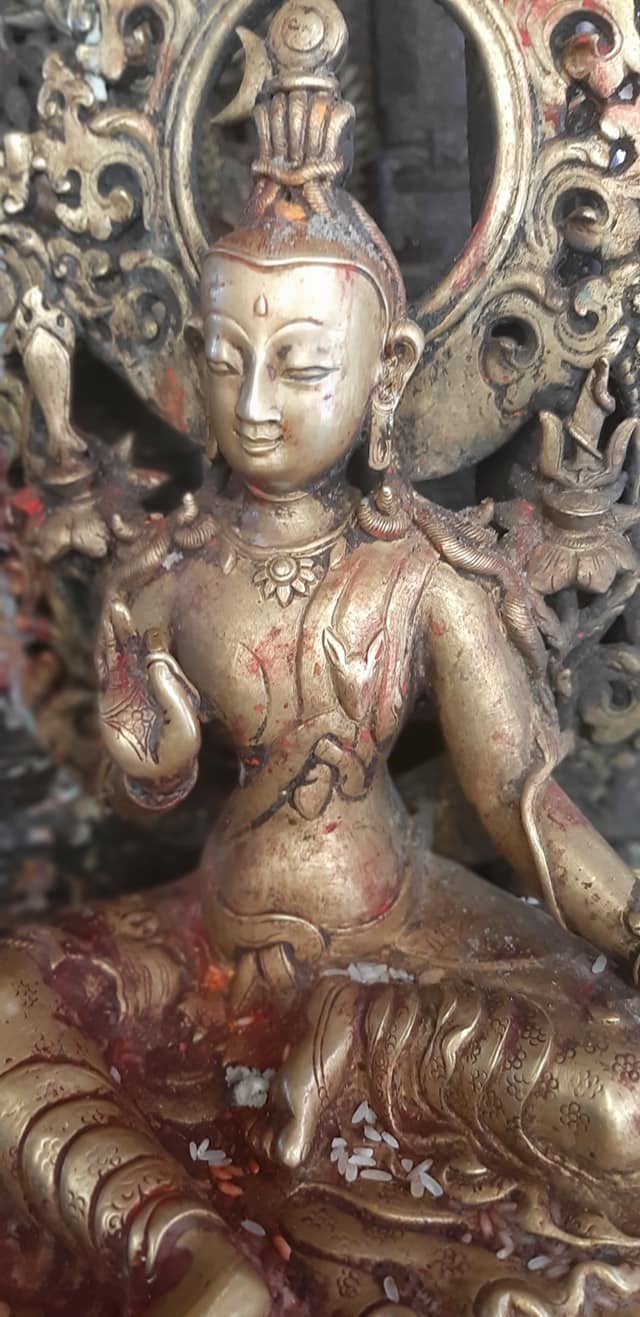
How does art unite?
Art may come with various expressions in different countries according to their cultures. But the art experience remains the same which touches the hearts and connects them uniting everyone with an infectious love and serenity beyond borders. SCC is grounded in this faith because it knows the land that gave birth to the greatest cultural beliefs of the world.
(Photos by Dr Soumya Chavan)

